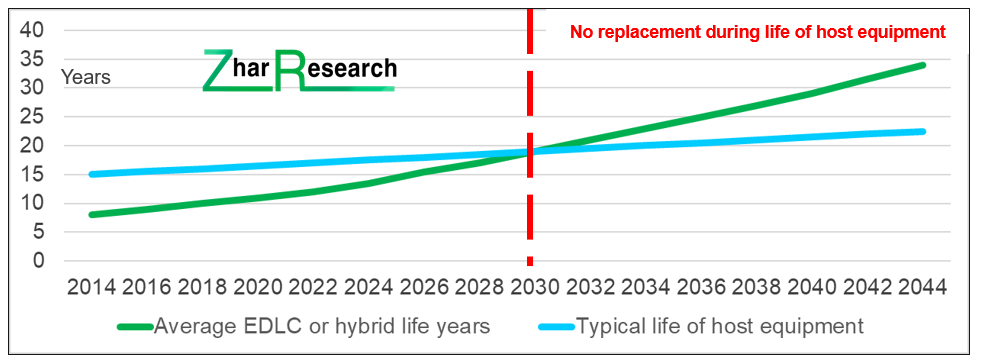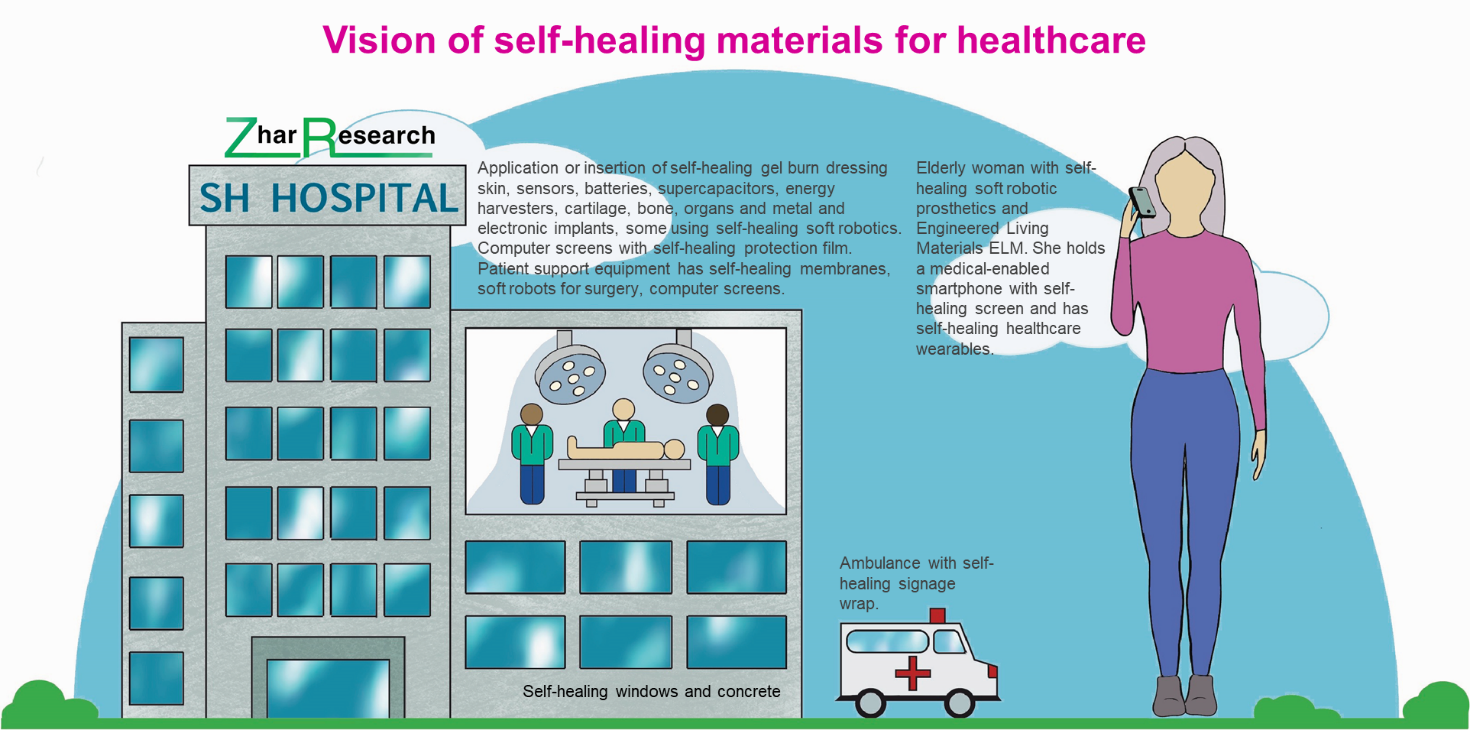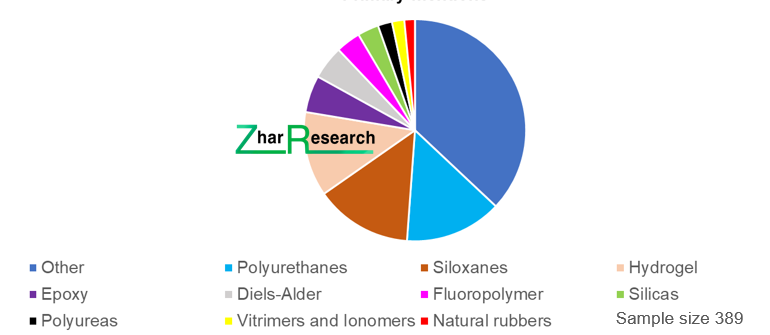Advanced Materials and Components Become Fit-and-Forget in 2024
Fit-and-forget is becoming the mantra. New materials are the key to it. Electric vehicles have almost no maintenance because they have less to go wrong and most of the parts last for the life of the vehicle. The so-called More Electric Aircraft EVR progresses a similar change in the sky with small aircraft even going fully battery-electric. That is why Textron, owner of combustion aircraft manufacturers Cessna and Beechcraft, bought Pipistrel that makes battery ones.
New needs drive fit-and-forget
With deep mines becoming unmanned and increased military investment, the need for fit-and-forget parts increasingly beats any worry about up-front cost being greater. Attention to total cost of ownership also drives this. The flood of purchases of large lithium-ion batteries for grid storage to cover the intermittency of wind and solar power is an historical aberration because they only last a few years. Mercifully, replacements such as redox flow batteries RFB and gravity storage lifting blocks are coming along that should last up to 100 years with minimal repair and they even viably store electricity for one month – a new need caused by wind and solar winning. See Zhar Research report, “Long Duration Energy Storage LDES Reality: Materials, Equipment Markets in 35 Lines, Technology Roadmaps, Manufacturers, Winners, Losers, Alternatives 2024-2044”.
Here come hybrid devices with new materials
Where size and weight are a problem, hybrid-RFB combining conventional battery and RFB chemistry and lithium-ion capacitors LIC combining the chemistry of batteries and supercapacitors are now taking off. See LIC in the new hydrogen-supercapacitor trains, fusion power, electromagnetic weapons, mining vehicles, the most rugged, longest-lived e-bike and the fastest chargers for large vehicles on- and off-road. There is a likelihood that those two hybrids – hybrid RFB and LIC - will overtake the fast-growing sales of their origins – the RFB and the supercapacitor – within twenty years. For example, long-life, more reliable hybrid-RFB are selling for grids, microgrids, even some solar houses. Newcomer Supercapacitor Energy Inc competes with LIC stacks for microgrids and solar houses. Goodbye fires and failures.
Meanwhile, both batteries and supercapacitors are themselves being reinvented. Using new materials, the reinvention of energy storage to be more capable and longer-lived spans microwatt-hours to GWh.
Cooling reinvented
Another change is the arrival of solid-state cooling in the face of global warming and vapor compression cooling making cities several degrees hotter, compounding the problem. New materials making all this possible are deeply examined in Zhar Research report, “Solid State Cooling Markets 2024-2044”.
Self-healing, multifunctional materials arriving
To fully understand all these opportunities for added-value materials suppliers and device manufacturers, we must take into account certain other trends. They include self-healing materials where Zhar Research has separate reports on the industrial and healthcare aspects. Also important are multifunctional smart materials with far fewer failure modes and materials with desired properties that were previously unattainable. And it is all taking place in the context of eliminating flammability, temperature constraints, expensive metals and toxicity problems. Trouble-free long life beats the circular economy any day.
Hydrogels reinvented
One example is new hydrogels creating semi-solid batteries, supercapacitors and variants that do not leak or dry out and they are self-healing. See Zhar Research report, “Hydrogels: Future Technologies and Markets 2024-2044”.
Goodbye toxigen issues
Every year, a higher percentage of supercapacitor manufacturers abandon toxic acetonitrile in favour of aqueous electrolytes and the graphene electrodes that work well with them. Graphene increases ac performance, power handling and energy storage capacity. See all these trends and opportunities graphed in Zhar Research report, “Supercapacitor, Pseudocapacitor, CSH and BSH Hybrid Market Forecasts in 26 Lines, 110 Manufacturers Appraised, Deep Technology Analysis, Roadmaps, Next Successes 2024-2044”. For instance, it explains why carbon nanotubes, MXenes metal organic frameworks MOF have become part of this story, some just entering production.
Trend to everyday elements
Every year, a smaller percentage of RFB manufacturers use expensive vanadium in RFB though vanadium versions may still enjoy 20 years more growth. They favour aqueous and other electrolytes that need no expensive electrodes to work well with them. See Zhar Research report, “Redox Flow Batteries: 26 Market Forecasts, Roadmaps, Technologies, 48 Manufacturers, Latest Research Pipeline 2024-2044”.
Battery-free storage
Grid and off-grid storage are partly trending to battery-free for much longer life and storage time. That is just part of the megatrend examined in Zhar Research report, “Battery-Free Electrical Energy Storage and Storage Elimination MilliWh-GWh: Markets, Technologies 2024-2044”.
Solid state cooling
Solid state cooling takes many forms but it mostly involves multifunctional smart materials providing thermal insulation, reflection and radiation together . This increasingly avoids expensive materials, the cost being now in the manufacturing complexity you must tackle. Contrast vapour compression cooling progressing from liquids that damage the ozone layer to ones that cause global warming and now, all-too-often, ones that have toxic breakdown products with cost and life issues remaining.
New electronics materials
In electronics, several trends take us to battery-free devices that are fit-and-forget. Firstly, on-board energy harvesting becomes more powerful due to improved efficiency and multi-mode operation. Secondly, we use loads that need less electricity such as new ultra-low-power integrated circuits and LEDs. Thirdly, we await planned 6G Communications with simultaneous wireless information and power transfer SWIPT that enables user devices to have just fit-and-forget supercapacitors or no storage at all.
New optical materials
New optical materials are increasing in need and supply, not least because telecommunications is moving into THz far infrared, near infrared and visible frequencies. See Zhar Research report, “6G Communications: Terahertz and Optical Materials, Components 2024-2044 with 32 Forecast Lines, Technology Roadmaps”.
In support, electronics and electrics are progressing to new semiconductors and active materials such as plasmonic graphene and chalcogenides for THz frequencies, perovskite-on-silicon for more efficient photovoltaics everywhere and metamaterials. For instance see, the overview Zhar Research report, “6G Communications: Materials and Hardware Markets and Technology 2024-2044”.
Structural electronics
Structural electronics cuts across much of this with researchers progressing such things as supercapacitor aerogel carbon/ carbon fibre fuselages for aircraft down to supercapacitor cases for smartphones.
Sensors
Call them wireless sensor networks LPWAN, IOT or something else but self-powered wireless sensors with drive circuits and transceivers are popping up everywhere. Increasingly that is where they cannot be accessed for maintenance or replacement. Can they become solid smart materials, some even stretchable? See Zhar Research report, “Sensor Markets, Technologies, Companies 2024-2044: By Inputs, Modes, Applications, Patents, Manufacturers, Research, Roadmaps, Forecasts”.
Report availability
The reports can be obtained from www.zharresearch.com and www.Giiresearch.com.
Press release distributed by Pressat on behalf of Zhar Research , on Tuesday 30 January, 2024. For more information subscribe and follow https://pressat.co.uk/
Sensors Energy Storage Solid State Cooling Ldes Self-Healing Materials Supercapacitors Hydrogels Technology Battery Free 6g Computing & Telecoms Consumer Technology Education & Human Resources Environment & Nature Manufacturing, Engineering & Energy Opinion Article
Published By

anastasiams@zharresearch.com
https://www.zharresearch.com/
Dr Peter Harrop
peterharrop@zharresearch.com
Visit Newsroom
You just read:
Advanced Materials and Components Become Fit-and-Forget in 2024
News from this source:




